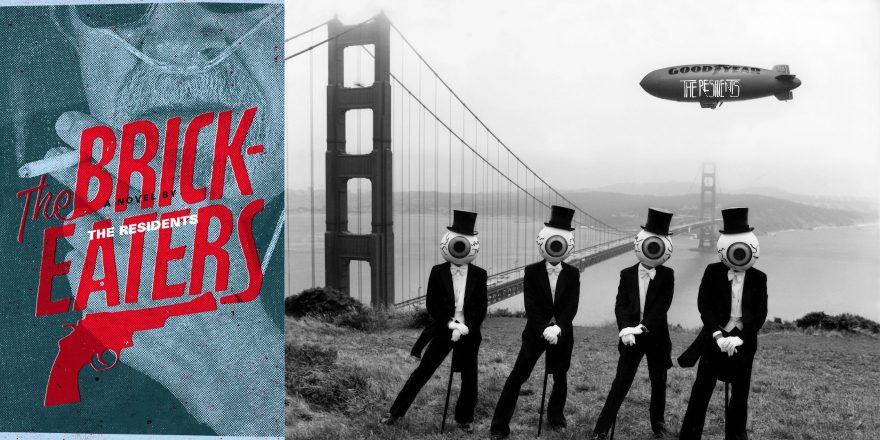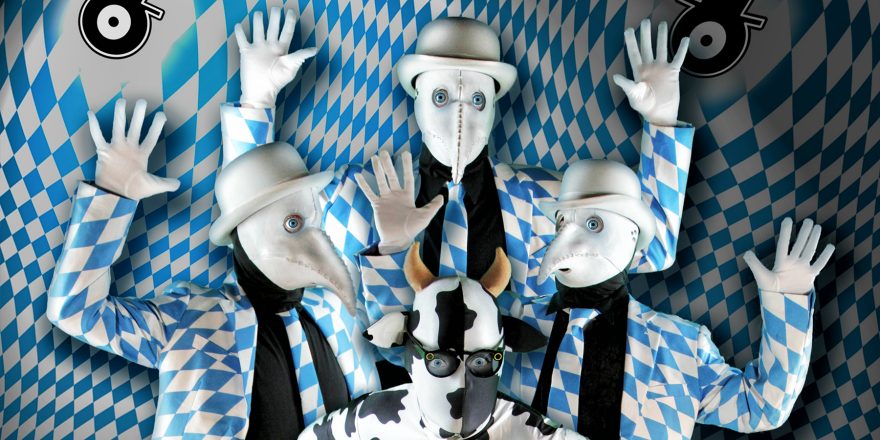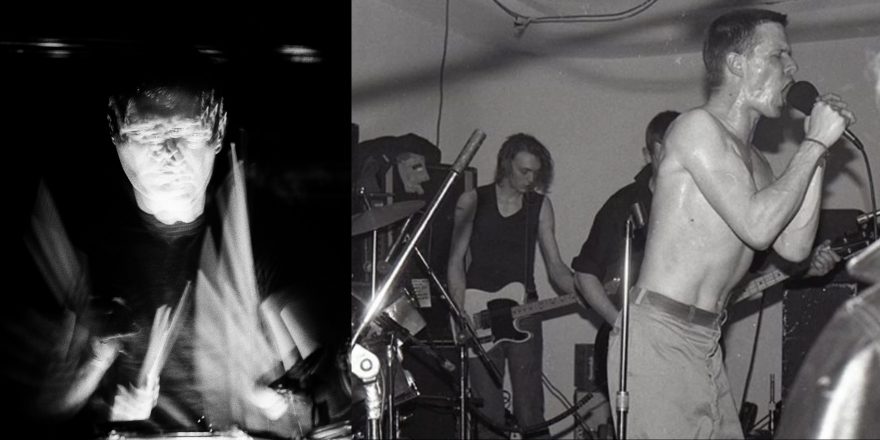Who are The Residents? What are The Residents? When Adam Parfrey, founder of Feral House and Process Media, was a young man walking the streets of San Francisco, he stumbled across a building with a placard affixed to the door: The Cryptic Corporation. This was in the very early ‘80s when The Residents were about to embark on their most fecund creative period and transform into the beloved and often misunderstood entity.
I recently spoke to Homer Flynn, an employee of The Cryptic Corporation and spokesperson for The Residents about the notions of anonymity and the novel writing. He believes that all of us can be The Residents at any given time; that the construct of the group allows for both multiple Residents and no Residents whatsoever. I teased him as one would an intransigent uncle. Could not that idea mean that much like the Puerto Rican pop sensation, Menudo, that The Residents exist in a suspended state of non-being? Homer laughed with his Louisiana drawl still present and agreed that having new bodies inhabit The Residents was a fine idea indeed.
Which leaves us knowing and unknowing.
Do we accept a creation simultaneously accepted and rejected by its creator? What drives our need to know who the maker is? How does something perceived as individual—novel writing—belong to the collective? Does this distraction of personality detract from the quality of the art? Homer addressed this issue. He says that The Residents wanted to attempt the challenge of writing a novel as the form is highly singular and constrained—the exact opposite of how music is made and recorded by a band. It’s a near OULIPO-ian idea that tucks nicely into the Oblique Strategies. Choose a new sound. How would you have done it?
The Brickeaters as a novel takes a collection of familiar-ish characters and pulp fiction tropes and weaves them into something wholly The Residents. Here’s how Homer described the action:
“Frank Blodgett, the novel’s narrative voice is an alcoholic, middle-aged writer from Los Angeles, wallowing in the throes of a mid-life crisis. Desperately seeking any excuse to escape a dysfunctional life, Frank seizes upon a newspaper article relating the discovery of Wilmer Graves’s body, abandoned beside his oxygen bottle and revolver, on a lonely road in southern Missouri. Pursuing a story he desperately needs to tell, the writer immediately flies to Kansas City, rents a car and drives to Clinton, Missouri, the scene of the old man’s death. A series of curious incidents and chance encounters lead Blodgett to believe he’s onto the story of a lifetime until, drunk, lovesick and out of control, he drives his rental car into a ditch, ultimately finding himself sharing a jail cell with Ted Hendricks. Suspicious and defensive, Hendricks initially clashes with the writer before eventually breaking down and confessing his involvement. “
The following excerpt relates the story of Willy and Ted’s final robbery.
—The Publisher and Homer Flynn, Official Spokesperson for The Residents
“I know it’s confusing, Willy, but it’s all spelled out in PAGWAG’s manifesto right here on their Facebook page. From their perspective, the population of Los Angeles is primarily made up of celebrities and other parasites, who they see as scum… the underbelly of our culture, but they also understand that this celebrity class is highly influential. Okay, here’s the deal… while a little fluoride is good for your teeth, too much of it creates a condition called dental fluorosis, which makes your teeth turn brown. So the purpose of this fluoride contamination is to give BAD TEETH to everyone in L.A., and once that happens, the parasites will support PAGWAG’s agenda of cleaning up and protecting the water supply. I mean, their plan is completely demented, but it’s not without a certain twisted logic. Think about it—whoever heard of a celebrity with brown teeth? It’s kind of fascinating.”
“But you’re gonna report ’em, right? They can’t get away with this shit… can they?”
“Well, they haven’t actually done anything illegal yet, but even so, there’s really nothing to worry about. It’s like I said before, PAGWAG’s agenda may be a little more creative than most of the whack jobs out there, but in one sense, they’re all the same… they never have any money, so they’re ineffective. Unbalanced, sure, and maybe even crazy, but they’re ultimately harmless.”
Continuing his story, Hendricks said the next day they pulled their final robbery.
Stopping outside a liquor store, Willy speaks, “This shud’n take long, kid. Just wait out here with the motor runnin’ an’ I’ll be right back.” The tech worker watches as the old man struggles to remove himself and his oxygen tank from the car, then, standing outside the door, he pulls out his pistol, takes a deep breath and enters. No sooner does the ex-con disappear inside the small building than a huge pickup drives up and parks next to the Honda. As the young tech worker watches, a very large, overweight man exits the truck and immediately enters the liquor store no more than sixty seconds behind Willy Graves.
Sensing trouble, Hendricks leaves the car, its motor still running, approaches the store and peeks through the window. Peering into the dark interior, he’s horrified to see the big man standing near the door pointing a gun at Willy across the room; Graves is positioned by the cash register, his pistol also drawn and aimed at the clerk. Shouting voices can be heard through the window, but the sound is too muffled to be clearly understood.
Anxious, Hendricks pauses for a moment then quickly retrieves his iPod and headphones from the Honda. Convinced that the man hasn’t seen him, the tech worker places the headphones on his ears, playing the music loud enough that a distinct buzz can be heard by anyone nearby. The music is “Constantinople,” a song by The Residents, and Hendricks immediately begins to sing along as he enters the liquor store, blithely swaying to the music. “Here I come, Constantinople, here I come, Constantinople…”
As the tech worker enters the room, both Willy and the big man are screaming, each demanding that the other surrender and drop his weapon. Terrified of finding himself in the line of fire, the clerk cowers behind the counter. Deliberately looking away from the ongoing conflict, Hendricks appears oblivious to the tense standoff as he casually approaches a large display of liquor bottles still singing, “All the leaves are off of the oak and all the sheep have followed…”







